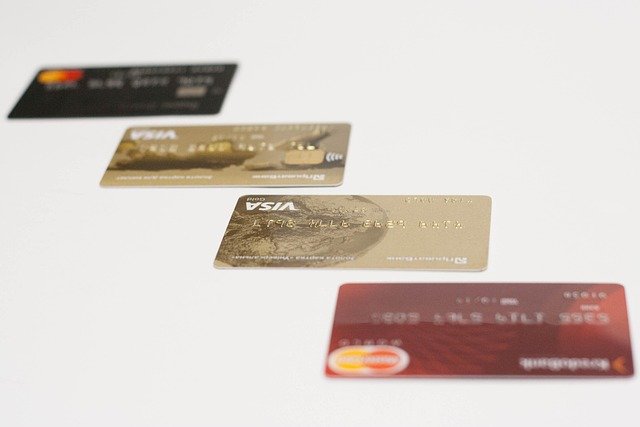Explore easy loan choices with no additional documentation.
In today's fast-paced world, access to quick and hassle-free financial solutions is more important than ever. For many individuals and businesses, the prospect of obtaining a loan without the burden of extensive paperwork is particularly appealing. This article delves into the world of easy loan options that require minimal documentation, providing you with valuable insights into streamlined borrowing processes and efficient financial solutions.

What are no-documentation loans?
No-documentation loans, also known as low-doc or no-doc loans, are financial products that require minimal paperwork from borrowers. These loans are designed to simplify the application process, making it easier for individuals and businesses to access funding quickly. Instead of requiring extensive financial records, tax returns, or employment verification, lenders offering these loans may rely on alternative methods to assess creditworthiness.
How do no-documentation loans differ from traditional loans?
The primary distinction between no-documentation loans and traditional loans lies in the application process. Traditional loans typically require borrowers to provide a comprehensive set of financial documents, including pay stubs, tax returns, bank statements, and employment verification. In contrast, no-documentation loans streamline this process by reducing or eliminating these requirements. This approach can significantly speed up the approval process and make loans more accessible to those who may struggle with traditional documentation.
What types of no-documentation loans are available?
Several types of no-documentation loans cater to different financial needs and situations. Some common options include:
- Stated Income Loans: Borrowers declare their income without providing extensive documentation.
- Bank Statement Loans: Lenders use bank statements to verify income and cash flow.
- Asset-Based Loans: These loans are secured by the borrower’s assets, such as property or investments.
- No Income Verification Mortgages: Designed for homebuyers who may have difficulty proving their income through traditional means.
- Business Lines of Credit: Offer flexible funding for businesses based on factors other than extensive financial documentation.
Who can benefit from no-documentation loans?
No-documentation loans can be particularly beneficial for certain groups of borrowers. Self-employed individuals, freelancers, and gig economy workers often have irregular income streams that may not fit neatly into traditional lending criteria. Small business owners, especially those in the early stages of operation, may also find these loans attractive due to the reduced paperwork requirements. Additionally, individuals with significant assets but limited regular income, such as retirees or investors, may find no-documentation loans to be a suitable option for their borrowing needs.
What are the pros and cons of no-documentation loans?
No-documentation loans offer several advantages, including a faster application process, increased accessibility for non-traditional borrowers, and reduced paperwork burden. These loans can be particularly useful for those who need quick access to funds or have complex financial situations that may not be adequately reflected in standard documentation.
However, it’s important to consider the potential drawbacks. No-documentation loans often come with higher interest rates compared to traditional loans, as lenders may perceive them as higher risk. Additionally, loan amounts may be more limited, and some lenders may require larger down payments or collateral to offset the reduced documentation. Borrowers should carefully weigh these factors against the benefits of a streamlined application process.
How can you find reputable no-documentation loan providers?
When seeking no-documentation loans, it’s crucial to work with reputable lenders to ensure fair terms and avoid potential scams. Start by researching established financial institutions that offer these loan products. Online lenders and alternative financing companies may also provide no-documentation options. Always compare multiple offers, read the fine print carefully, and be wary of lenders who promise guaranteed approval without any form of verification.
Comparison of No-Documentation Loan Options
To help you navigate the world of no-documentation loans, here’s a comparison of some common loan types and their features:
| Loan Type | Provider Type | Key Features | Cost Estimation |
|---|---|---|---|
| Stated Income Mortgage | Online Mortgage Lenders | - Based on declared income - Faster approval process - Suitable for self-employed |
Higher interest rates, typically 1-2% above standard mortgage rates |
| Bank Statement Loan | Alternative Lenders | - Uses bank statements for verification - Flexible income requirements - Good for business owners |
Interest rates typically 0.5-1.5% higher than traditional loans |
| Asset-Based Line of Credit | Commercial Banks | - Secured by business assets - Flexible draws and repayments - No regular income proof needed |
Variable rates, often tied to prime rate plus 2-5% |
| No Income Verification Personal Loan | Online Lenders | - Quick approval process - Based on credit score and assets - Unsecured options available |
APRs ranging from 6% to 36%, depending on creditworthiness |
Prices, rates, or cost estimates mentioned in this article are based on the latest available information but may change over time. Independent research is advised before making financial decisions.
In conclusion, no-documentation loans offer a valuable alternative for borrowers seeking streamlined access to funds. While they can provide faster approvals and increased flexibility, it’s essential to carefully consider the terms, costs, and your financial situation before committing to any loan product. By understanding the options available and working with reputable lenders, you can find a no-documentation loan that meets your needs without unnecessary bureaucratic hurdles.
The shared information of this article is up-to-date as of the publishing date. For more up-to-date information, please conduct your own research.






